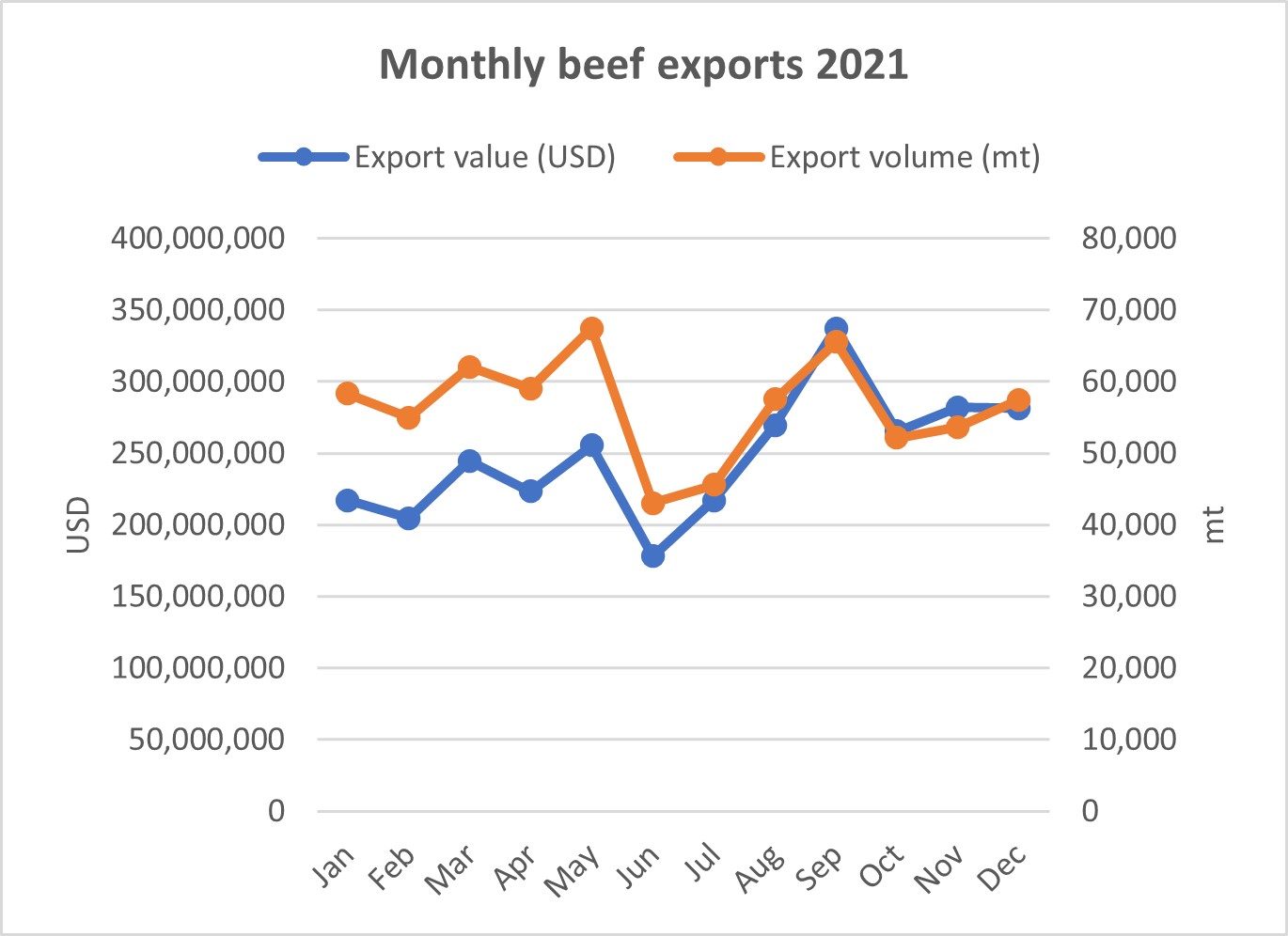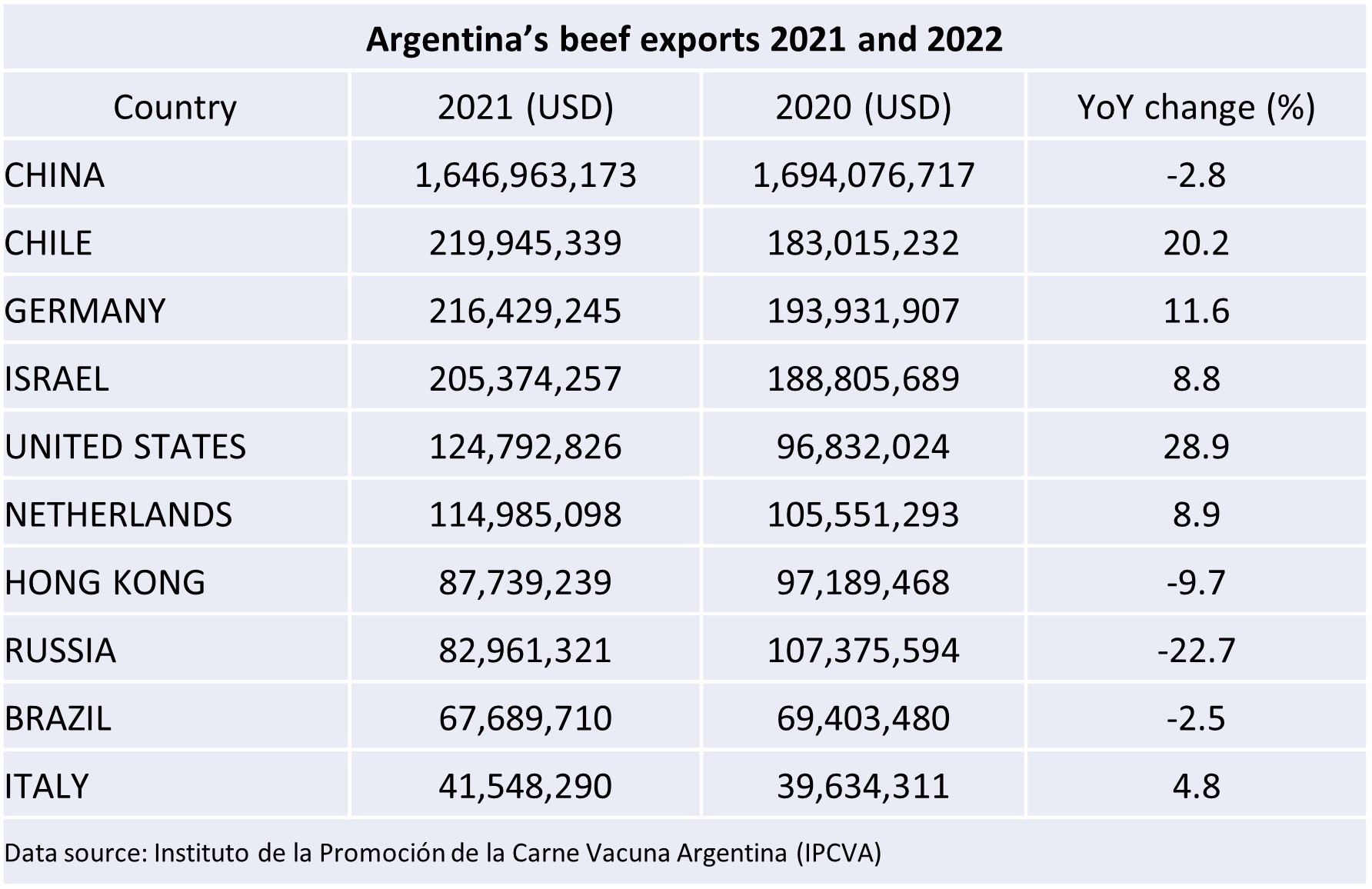Growth in Argentina’s Beef Exports Despite Government Restrictions

Export ban and restrictions
Since 2018, the Argentine economy has been troubled by currency depreciation and hyperinflation that brought the economy to its knees. In 2021, beginning with a policy inclusive of a ban which later escalated to include various restrictions on beef exports, aiming to reduce the increasing domestic food prices by increasing domestic supply, was introduced.
From the monthly export figures, it is evident that when export restrictions were first introduced by the Argentine government in May 2021, it had an immediate negative impact as exports in June dropped 36% MoM. Initially, beef exports were banned for 30 days from 19th May 2021, but a month later on 22nd June 2021, it was announced that only certain curts would be completely banned for export, while the monthly export volume was set to not exceed 50% of the average exported volume in Jul-Dec 2020, equivalent to a limit of around 28,500 mt. per month. Moreover, the export restrictions did not apply to high-quality cuts destined for the EU under the 481 Quota and Hilton Quota Agreements, nor to the 20,000 mt quota for the USA and 800 mt quota to Colombia.

The ban and subsequent restrictions caused great controversy within Argentina, and the details of the restrictions were tweaked throughout the year. At the beginning of Oct 2021, the export cap was lifted for China, much to the relief of the industry as it represents the main market for Argentine beef with 61% of exported volume in both 2020 and 2021. At the beginning of 2022, the restrictions on export seven cuts popular on the domestic market and whole/half cattle were extended for 2 years until the end of 2023.
Export growth despite restrictions
Despite the restriction imposed by the government, the value of Argentina’s beef exports increased 2.2% YoY from USD 2.91 billions to USD 2.98 billions - a result only second to 2020, when exports worth USD 3.28 billions were recorded. Meanwhile the price per mt increased 11.5% to USD 4,397. The increase in exported value took place despite export volumes falling from 738,945 mt in 2020 to 676,895 mt, corresponding to a 8.4% decrease YoY.

Exports to China fell by 2.8% owing to the ban and global logistics challenges, while exports to Russia fell 22.7% as Russia once again allowed imports of beef from Brazil following a ban due to allegations of the use of prohibited feed additives. The closure of other markets put pressure on the USA as a destination for Argentine beef and here exports were lifted 28.9%, while exports to EU countries continued to increase regardless of restrictions as they were protected by exemptions. Tridge’s engagement manager in Argentina, Ignacio van Gelderen, reports a strong demand, especially from China, but that exporters dealing in markets not covered by the quota agreements are facing great uncertainties from month to month, as they cannot plan timing and quantities of shipments.
Export data from 2021 reveal that the Argentine beef sector have managed to offset their exportable quantities despite government restrictions. However, the interference in trade causes disruptions in individual markets as Argentina’s lower exports to China may be substituted by competing export nations such as Brazil, USA or Australia.



